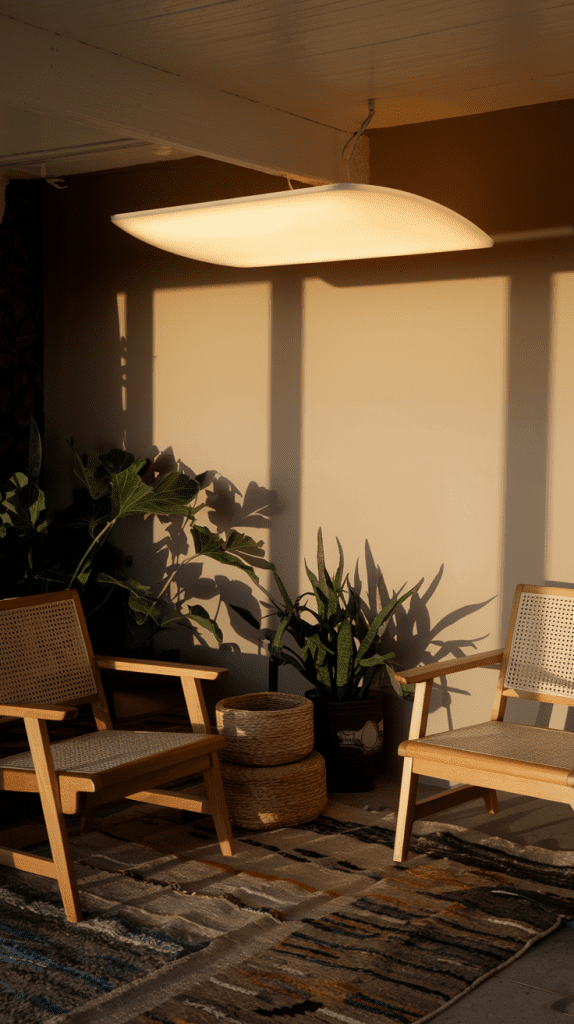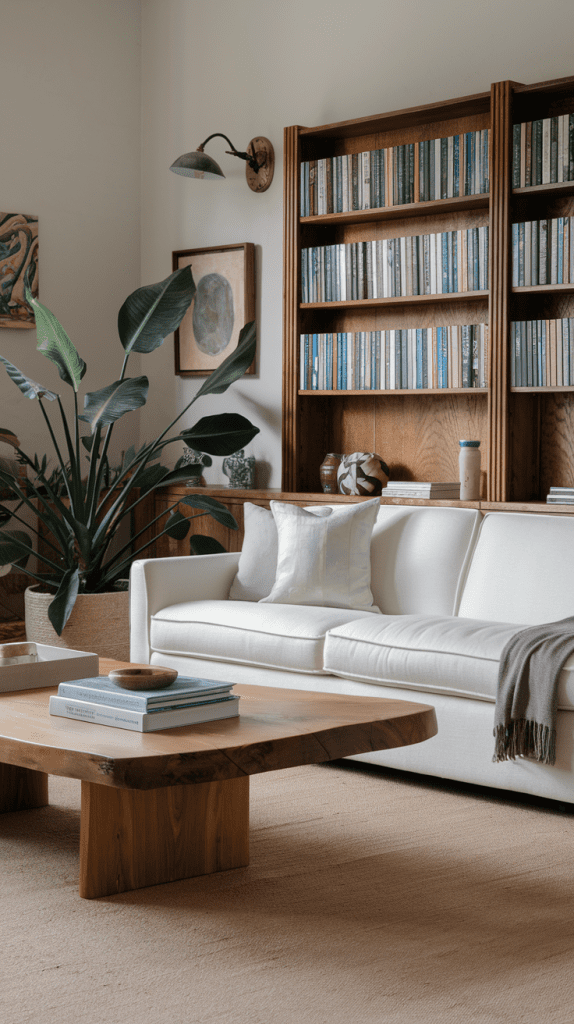Where To Put LED Lights in a Room? A Complete Guide
Want to transform your room’s ambiance and functionality with LED lights? Knowing where to put LED lights in a room can significantly impact the mood, highlight architectural features, and improve overall visibility. This comprehensive guide explores various LED lighting placement strategies for different room types and purposes, from creating a cozy atmosphere to maximizing task…
Want to transform your room’s ambiance and functionality with LED lights? Knowing where to put LED lights in a room can significantly impact the mood, highlight architectural features, and improve overall visibility. This comprehensive guide explores various LED lighting placement strategies for different room types and purposes, from creating a cozy atmosphere to maximizing task lighting efficiency. You’ll learn about different LED types, placement techniques, and how to avoid common mistakes. Let’s dive in!
LEDs, or Light Emitting Diodes, are semiconductor devices that convert electricity into light. They’re known for their energy efficiency, long lifespan, and versatility in design and color temperature. Unlike incandescent bulbs that produce heat, LEDs generate minimal heat, making them safer and more eco-friendly.
Where to Put LED Lights in a Room?
The market offers a wide array of LED lights, including:
- Strip Lights: Flexible and adaptable, ideal
for accent lighting or under-cabinet illumination.
- Recessed Lights: Built into ceilings, providing even, general lighting.
- Track Lighting: Highly adjustable spotlights mounted on a track system, perfect for directing light.
- Pendant Lights: Hanging lights offering both ambient and task lighting.
- Table and Floor Lamps: Portable and flexible options, useful for supplemental illumination.
Color Temperature and Brightness

LEDs are available in various color temperatures, measured in Kelvin (K). Lower Kelvin values (2700K-3000K) produce warm, yellowish light, while higher values (5000K-6500K) create cool, bluish light. Brightness is measured in lumens (lm), with higher lumens indicating brighter light.
Planning Your LED Lighting Scheme
Assessing Your Room’s Needs
Before placing any LEDs, consider the room’s function. A bedroom requires a different lighting approach than a kitchen or home office. Think about task lighting (reading, cooking), ambient lighting (overall illumination), and accent lighting (highlighting features).
Measuring Your Space
Accurate measurements are crucial for proper LED placement. Use a measuring tape to determine distances between walls, furniture, and potential light fixtures. This will help you plan the layout and ensure adequate illumination.
Choosing the Right LED Type
The type of LED light you choose depends on your needs and preferences. Recessed lights are ideal for general lighting in ceilings, while strip lights can be used for accent lighting under cabinets or behind furniture.
Strategic Placement for Different Room Types

Living Room Lighting: Creating Ambiance
In living rooms, combine ambient lighting from recessed or ceiling lights with accent lighting from strip lights or floor lamps. Strategic placement can highlight artwork or architectural features. Consider dimmable LEDs to control the mood.
Bedroom Lighting: Promoting Relaxation
Bedrooms benefit from soft, warm lighting. Use bedside table lamps for reading and ambient lighting from ceiling fixtures or strip lights to create a calming atmosphere. Avoid harsh, bright lights.
Kitchen Lighting: Enhancing Functionality
Kitchens require a combination of task and ambient lighting. Under-cabinet strip lights illuminate countertops, while recessed lights provide general illumination. Pendant lights above islands can add style and functionality.
Bathroom Lighting: Ensuring Brightness
Bathrooms need bright, even lighting for safety and functionality. Recessed lights in the ceiling and vanity lights provide sufficient illumination. Consider mirror-mounted lights for applying makeup or shaving.
Maximizing the Impact of LED Lighting
Layering Lighting Techniques
Layering lighting involves using multiple light sources to achieve different effects. This could include overhead ambient lighting, task lighting, and accent lighting to create depth and visual interest.
Using Dimmers for Flexibility
Dimmers allow you to control the brightness of your LEDs, adjusting the ambiance to suit your needs. This is particularly useful in living rooms and bedrooms where creating the right mood is essential.
Highlighting Architectural Features
LEDs can be used to highlight architectural details such as crown molding, niches, or fireplaces. Careful placement can create a dramatic effect and add visual interest to the space.
Common Mistakes to Avoid
Insufficient Lighting
One common mistake is not providing enough light. Ensure you have sufficient lumens to adequately illuminate the space for its intended purpose. Overly dark rooms can create an unwelcoming atmosphere.
Poor Light Distribution
Uneven lighting can be glaring and uncomfortable. Plan your LED placement to ensure even distribution of light throughout the room. Consider bouncing light off walls or ceilings to soften harsh shadows.
Ignoring Color Temperature
Choosing the wrong color temperature can affect the mood of the room. Warm light is generally preferred for bedrooms and living rooms, while cool light is suitable for kitchens and bathrooms.
Advanced LED Lighting Techniques
Smart LED Lighting
Smart LEDs offer advanced features such as color-changing capabilities, voice control, and integration with home automation systems. This allows for personalized lighting control and customization.
LED Profiles and Cove Lighting
LED profiles and cove lighting are excellent options for creating indirect lighting effects. They can be used to highlight ceilings, walls, or architectural features in a subtle and elegant way.
RGB LED Strip Lighting
RGB LED strip lights offer a wide range of color options, allowing you to change the mood and ambiance of your room with a simple touch. They’re highly versatile and can be used in various creative ways.
Choosing the Right LED Bulbs and Fixtures
Understanding Lumens and Kelvin
When choosing LED bulbs, pay attention to lumens (brightness) and Kelvin (color temperature). Higher lumens mean brighter light, and the Kelvin rating determines the color (warm, cool, or neutral).
Selecting Appropriate Fixtures
The type of fixture you choose depends on your lighting needs and the style of your room. Consider factors like design, materials, and compatibility with your chosen LEDs.
Considering Energy Efficiency
LEDs are inherently energy-efficient, but look for Energy Star rated products to ensure they meet the highest standards for energy savings.
Installing Your LED Lights
Safety Precautions
Always turn off the power before working with electrical wiring. If you’re unsure about electrical work, it’s best to consult a qualified electrician.
Basic Installation Techniques
Most LED lights are relatively easy to install, but specific instructions will vary depending on the type of light and fixture. Always follow the manufacturer’s instructions carefully.
Troubleshooting Common Issues
If you encounter problems during installation, refer to the manufacturer’s troubleshooting guide or consult a qualified electrician. Common issues include faulty wiring, loose connections, or incorrect bulb installation.
Frequently Asked Questions
What are the benefits of using LED lights?
LEDs offer numerous benefits, including energy efficiency, longer lifespan, lower heat output, and versatility in design and color temperature. They’re also environmentally friendly due to their reduced energy consumption.
How long do LED lights last?
LEDs have a much longer lifespan than traditional incandescent bulbs, often lasting for 25,000 hours or more. This translates to years of reliable use, reducing replacement costs and waste.
Are LED lights expensive?
While the initial cost of LEDs might be higher than incandescent bulbs, their energy efficiency and long lifespan result in significant savings over time. The lower energy bills more than offset the higher initial investment.
Can I use LED lights outdoors?
Yes, many LED lights are designed for outdoor use and are weather-resistant. Look for lights with an IP rating (Ingress Protection) indicating their resistance to water and dust.
How do I choose the right color temperature for my room?
Warm white (2700-3000K) is suitable for relaxing spaces like bedrooms and living rooms. Cool white (5000-6500K) is better for task lighting in kitchens and bathrooms. Neutral white (3500-4100K) offers a balance between warm and cool.
What is the best way to clean LED lights?
Always turn off the lights before cleaning. Use a soft, dry cloth to gently wipe away dust and debris. Avoid using harsh chemicals or abrasive cleaners.
Final Thoughts
Mastering the art of where to put LED lights in a room is key to transforming your living space. By understanding the different types of LEDs, color temperatures, and placement techniques, you can create a functional and aesthetically pleasing environment. From creating a cozy atmosphere in your bedroom to maximizing task lighting in your kitchen, the possibilities are endless. Remember to plan carefully, consider your room’s function, and don’t be afraid to experiment with different lighting schemes. With a little effort, you can illuminate your home in a way that enhances its beauty and functionality. So, start planning your LED lighting project today and enjoy the transformative power of light!

